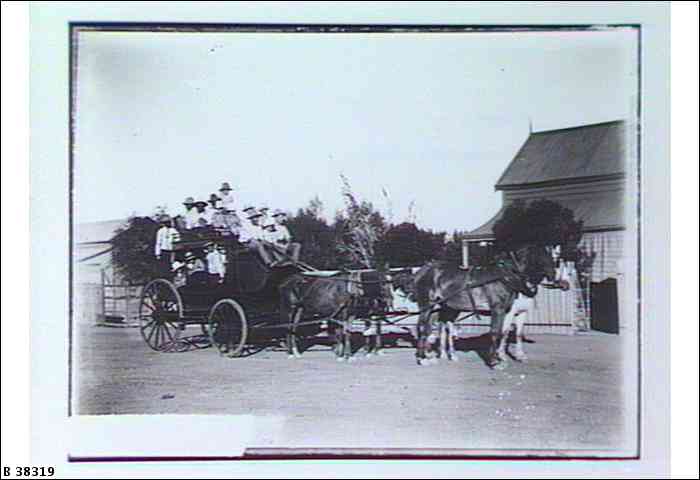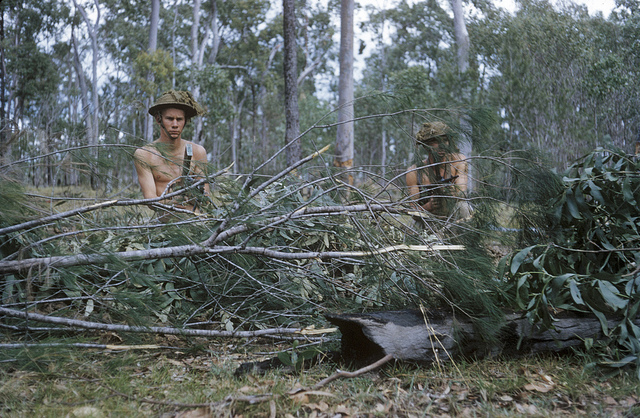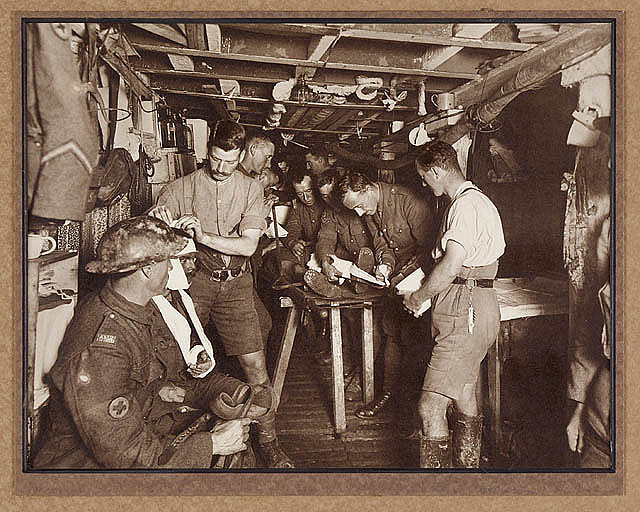ISSN:2202-5561 © Honest History Inc. 2013
Website launch
The new Honest History website (www.honesthistory.net.au) will be launched by Paul Daley, journalist and author
(Beersheba, Armageddon: Two Men on an Anzac Trail, Collingwood: A Love Story,Canberra)
6.00 pm, Thursday, 7 November 2013
Manning Clark House, 11 Tasmania Circle, Forrest, A.C.T.
Drinks and light refreshments
Like to come? Let us know at admin@honesthistory.net.au
by 31 October
Australia Day celebrations, Marree, SA, c. 1909: setting off in the stage coach (source: National Library of Australia Trove/State Library of South Australia, B 38319; photo: Mrs AM Hopewell)
Progress with Honest History
Tell us what you think
At Honest History we want to encourage discussion and debate on the topics we raise. Our Honest History Forum is now open to receive your comments and contributions. You can view the Forum at https://honesthistory.net.au/forum.
- Do you have suggestions on authors or opinions we should be adding to our resources? Log in to the relevant topic in our Forum and tell us.
- Do you disagree with the views one of our contributors? Log in and take issue.
- Do you have comments or suggestions on the way our website is working (or not working) for you? Log in and tell us about it.
How can you contribute to the website?
Our Editorial and moderation policy applies to all contributions including the Forum, aiming to promote relevant and civil discussion. You can even use the Forum to comment on the policy itself.
Oily rags, shoe-strings and websites: donations needed
The sayings about living on the smell of an oily rag ring very true at Honest History. Even with all volunteer labour there are expenses for printing, website hosting, promotion, and so on. If you think we are a worthy cause, please donate. Email us at admin@honesthistory.net.au to ask how.
More about our website
When the Honest History website launches on 7 November at www.honesthistory.net.au it will include three sections particularly concerned with war. Each section will contain bibliographical notes (author, citation, brief description, links) searchable in a number of ways. We will have a basic list in place under each heading by the time we launch the site and will be building the lists progressively – with the help of users of the site. We will concentrate at first on World War I but hope to broaden the coverage to other wars as we go; the issues are perennial.
Anzac analysed
Here there will be references which try to understand why the Anzac legend or myth has become so important to Australians and what are the implications of this for our country in the 21st century. The references will come not only from people writing today, historians, journalists and others, but from earlier eras. There will be many cross-references between this material and the references in the section ‘Using and abusing history’ introduced in our previous newsletter.
Australia’s war history
The references here will be under three sub-headings, Reality of war, Home front and Aftermath. They will be less concerned with descriptions of valour under fire than with writing about what life was really like on the front line, with what was happening to families and Australian society at home while the war was being fought, and with the impacts on individuals, families and the nation as a whole after 1918.
War literature
The power of the poetry of the Great War was indicated a decade later when conservative interests (including the Melbourne Age) proposed some of it should be banned. There was also prose and music from the war which sometimes captured aspects of the war experience that other means could not. This part of the website will explore some of these sources, many of them neglected for too long.
A camouflaged bren gun trench taken during a trek by A Company, 11th National Service Training Battalion basic training at Wacol, Qld, August 1958 (source: Australian War Memorial, P05887.015; photo: BC Reedman)
Latest content on themes of Honest History
Tangled up in red, white and blue
War remembrance and days of commemoration bring out extremes of rhetoric, little gems of hyperbole that even the speaker might reconsider had they given them the thought that public utterance normally deserves. But does this rhetoric misrepresent who we are? David Stephens writes…
Anzac, Vimy Ridge, Monash and the education of children
Chris Watters writes that the battles at Gallipoli and Vimy Ridge were starkly different in many ways; however, they are commemorated similarly in Australia and Canada. Both Canada and Australia have used their respective battles as a basis to forge their identity as a nation. Read more…
As a nation, we are especially good at forgetting our past. Some might argue that is a good thing since it means we are not bound, collectively at least, to the violence of the past. But if you claim to hold your country dear, as Australians do on Anzac Day and sporting occasions, you should want to learn about it. (Martin Flanagan, review of Thomas Keneally, Australians: Eureka to the Diggers)
The Battle for Australia: Henry Reynolds’s Forgotten War
Michael Piggott says there is so much about Henry Reynolds’s latest book to admire, to think about and to endorse. Yet the Australian War Memorial would rather forget this part of Australia’s history. Read more…
Gargoyles and remembrance at the Australian War Memorial
Bordered with militarily precise shrubs including the herb of remembrance, rosemary, the outer walls are adorned with a series of elaborately carved gargoyle-style heads representing Australia’s fauna – koalas, lizards, emus and, naturally, the ubiquitous kangaroo. And there are two Aboriginal faces in stone, a man and a woman – a salient reminder of how, even as recently as 1941, officialdom viewed Aborigines.
Paul Daley explores further our official attitudes to Pemulwuy, Jandamarra, Wyndradine, Durelle and Kanabygal and the wars they fought for the same goals that we say the Diggers fought for at Gallipoli. Read more…
The more he saw and knew of the men and officers of the Australian Imperial Force the more fully did the writer become convinced that the only memorial which could be worthy of them was the bare and uncoloured story of their part in the war. (CEW Bean, Official History of Australia in the War of 1914-18)
The national history curriculum and the Coalition
Prime Minister Paul Keating said that when you change the government, you change the country. Do you change the curriculum as well? This Honest History Factsheet brings together some sources that may help to answer that question. Read more…
Children at Latham Primary School, Canberra, 1979 (source: National Archives of Australia, A8746, KN28/6/79/3)
Whizzbangs (1)
Responsible government comes to the colony of New South Wales, 1856
The mainstream media always gets excited by significant changes in government. This was particularly so at the beginning. This from the Sydney Morning Herald, 22 May 1856: (2)
The youth of the colony will cherish the memory of this day. They, if spared for the term of human life, will see still greater organic changes. They will see the colony expand into a nation. A few troops multiplied into an army, the Government raised into a federal State… This patriotic and national feeling the New Constitution is calculated to arouse. It calls us all to the highest duties of citizenship, and confers upon us its full privileges. The subordination to the parent State exists only with things Imperial. With regard to the internal administration of the colony’s affairs we are independent. The colonists of New South Wales may make what they please out of the colony. They may adopt whatever system of law, of police, of government, of taxation that they like. They may make any new experiments and develop any new line of policy that they may think adapted to their circumstances. On themselves entirely rests the duty of directing the course of Government. Their own will be the glory of success – their own the disgrace and disaster of failure.
A Connecticut Yankee Down Under
‘Australian history’, according to Mark Twain, lecturing in Australia in 1895 to raise some much needed cash,
is almost always picturesque; indeed, it is so curious and strange, that it is itself the chiefest novelty the country has to offer, and so it pushes the other novelties into second and third place. It does not read like history, but like the most beautiful lies. And all of a fresh new sort, no mouldy old stale ones. It is full of surprises, and adventures, and incongruities, and contradictions, and incredibilities; but they are all true, they all happened. (3)
December in Kabul
In December 1841, the British Envoy in Kabul, Sir William McNaghten, wrote to his superior, Lord Auckland, in these terms, as the British occupying force prepared to leave Afghanistan. ‘We shall part with the Afghans as friends, and I feel satisfied that any government which may be established hereafter [in Kabul] will always be disposed to cultivate a good understanding with us.’ (4) Two weeks later, Sir William was beheaded by an Afghani jihadist leader. His body was dismembered, dragged around the city and finally strung up, along with his head and top hat. His deputy, Sir Alexander Burnes, had met a similar fate a little earlier although, in his case, the situation was complicated by his cuckolding of another Afghani leader.
The remaining British left Kabul in the depths of winter. Of 16 000 soldiers, mostly Indian sepoys, and camp followers, including women and children, only one Briton and a few sepoys reached Jalalabad. The rest were killed by the Afghanis, froze to death or were sold into slavery in Central Asia. These events, known as the First Afghan War, have been described as ‘the worst British military disaster until the fall of Singapore, exactly a century later’. William Dalrymple talks here about the parallels between then and now.
The history curriculum, 1904
As the teaching of history again looms into the spotlight, this statement echoes back to us from a century ago.
A course which entirely ignores history, which knows nothing of political economy or philosophy, and which expunges anything related to ethics and morality, may qualify its recipient for competency in the petty details of trade, but even though it costs £800,000 a year it can never create voters fitted to take a broad, unselfish view of what is best for the whole community. (5)
From the archives of war and peace
Treaty between the United States and other Powers providing for the renunciation of war as an instrument of national policy…
ARTICLE I: The High Contracting Parties solemly declare in the names of their respective peoples that they condemn recourse to war for the solution of international controversies, and renounce it, as an instrument of national policy in their relations with one another.
ARTICLE II: The High Contracting Parties agree that the settlement or solution of all disputes or conflicts of whatever nature or of whatever origin they may be, which may arise among them, shall never be sought except by pacific means.
The above extracts are from the Kellogg-Briand Pact, sometimes known as the Pact of Paris, signed by representatives of 15 countries, 27 August 1928, and later signed by most of the nations of the world. The pact was signed on behalf of Australia by Senator the Hon. Alexander McLachlan, an honorary minister in the Bruce-Page Government, leading the Australian delegation in Paris.
The blogosphere
As the Jaunceys gird their loins to start blogging in November, we have been researching other blogs. Note, for example, there is historypunk, for a discussion of how we look upon Anzac, from UWA Ph. D. student, Jo Hawkins, or a list of links to Australian blogs at Politically homeless, including a recently altered slogan about a politician (the words in italics were added late on the evening of 7 September 2013). Among the blogs listed are Wartard, Long War Journal, Historians are Past Caring, Australians for Honest Politics (perhaps a cousin of ours), Aussie Observer and, of course, some better known ones.
Websites well worth checking out
The Honest History website will have a section called Using and abusing history; it would be great if governments were less prone to do the latter and more inclined to the honest use of history, including in the development of policy. A website of a similar bent is that of the Australian Policy and History (APH) Network, based at Deakin University. APH ‘works to link historians with policy-makers, the media and the Australian public. We aim to inform public debate and promote better public policy-making through an understanding of history.’
Further away but also worth perusal is No Glory in War 1914-1918, the well-advanced website of a group which believes the centenary of World War I should be used to advance international peace and co-operation, rather than, as Prime Minister Cameron believes, be turned into a celebration akin to the Queen’s Diamond Jubilee. The website asks whether Britain should spend £55 million (about $A94 million) on the centenary; a pertinent question for Australia, too, where we are spending, at the Federal level alone, $140 million (about £82 million), far more in per capita and absolute terms than Britain is laying out. Worth asking ‘why’ with particular vehemence in our case?
Aftermath
In a month where the then Australian government seemed to toy, just for a moment, with joining in a coalition of the fairly willing to do something in Syria, this article from the New York Times‘s Frank Bruni reminds us of what happens afterwards. Call it ‘shell-shock’ or PTSD, somebody has to handle it and ultimately that somebody is not the government that makes the decisions to send in the expeditionary force or commit the fighter jets; it is the service men and women and their families who bear the brunt.
Bruni is particularly scathing about the euphemistic term, ‘boots on the ground’, to describe front-line troops. He concludes: ‘The way that we can best thank our good soldiers for their service is to keep in mind, whenever contemplating the next military engagement, the ravages of the last one. To remember that there are spouses passionately loved, parents sorely needed, sons and daughters fiercely cherished in all of those pairs of boots.’ Meanwhile, in Canberra, the Department of Veterans’ Affairs, ‘Commemoration Central’, still has no link on its website to Soldier On, an organisation founded in 2012 to support Australian servicemen and women who have been wounded, physically or psychologically, in contemporary conflicts.
Brendan broadens
Australian War Memorial Director, Brendan Nelson, gave a long and wide ranging speech to the National Press Club. Towards the end (about para 45) he refers to the current refurbishment of the World War I galleries at the Memorial and says ‘it’s important that we tell the story of who we were in 1914. Why did we join the war so readily? And what happened in Australia domestically through the course of that war? And how did we change, emerging from it, as we did, so damaged but proud in 1918?’ This is encouraging and it will be very interesting to see how it pans out: can the Memorial get further beyond bugles and bayonets than it has been in the past?
Dr Nelson also refers to his discussions with the heads of other national cultural institutions, reiterating
it’s important that we understand what happened in these four years and how it informs who we are now. What music were we listening to, what sort of work were people doing, how was the war reported? And what was the reaction of Australians to it and who were the whistleblowers? What was our culture? All of those very things that give you a comprehensive sense of who we were and how it informs who we are now.
The speech is worth a read. It goes on to talk about sound and light shows.
Touring the past
Finally, if you’re around the vicinity of the University of Sydney between now and February, here’s an exhibition that should be of interest. It’s called Touring the Past: Tourism and History in Australia, and it’s curated by Richard White.
David Stephens
______________________
(1) Whizzbang or whizbang: a small, high-speed shell whose sound as it flies through the air arrives almost at the same instant as its explosion; a firecracker with a similar effect. (dictionary.com)
(2) https://trove.nla.gov.au/ndp/del/article/12981826
(3) The Wayward Tourist: Mark Twain’s Adventures in Australia; introduction by Don Watson, Melbourne University Press, Carlton, Vic., 2007; first published 2006; extracts from Following the Equator, originally published in 1897, p. 65.
(4) William Dalrymple, Return of a King: The Battle for Afghanistan, Bloomsbury, London, 2013, p. 341. (5) HG Turner, A History of the Colony of Victoria Vol II, Longmans Green, London, 1904, p. 353.
Attending to wounded in the advanced dressing station on Hill 60, c. 1918 (source: Flickr Commons/State Library of New South Wales, a479001; photo: Frank Hurley)
About us
‘Not only Anzac but also lots of other strands in Australian history’. You can read about our objectives and our distinguished supporters under ‘About us’ at the top of the page. This e-Newsletter is going direct to 268 addresses and being sent on to over 200 others. If you missed our earlier e-Newsletters, you can link to them under ‘News-Past newsletters’ at the top of the page. Honest History is a coalition of historians and others supporting the balanced and honest presentation and use of Australian history in the context of the centenary of World War I. Honest History is incorporated under the Associations Incorporation Act (A.C.T.) 1991. President: Professor Peter Stanley; Secretary: Dr David Stephens Contact: admin@honesthistory.net.au.



